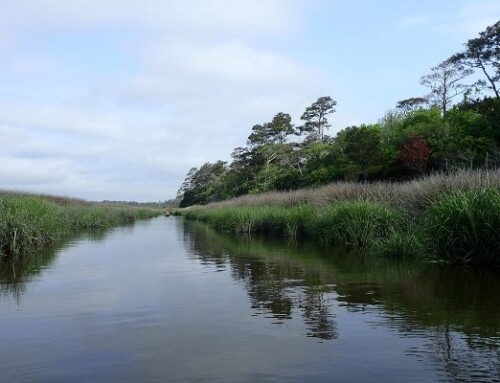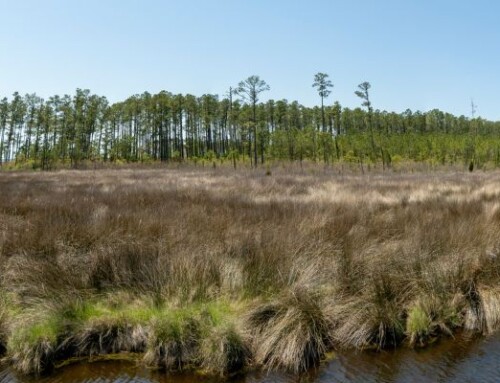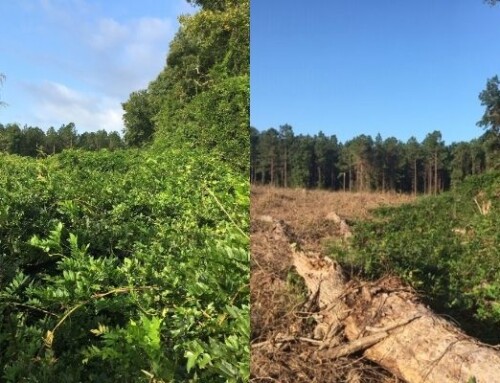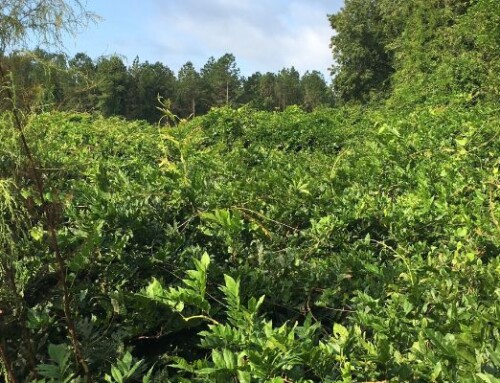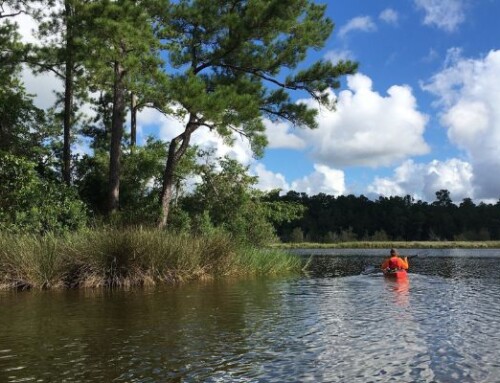The Coastal Land Trust is excited to have protected the historic 313.66-acre Hoggard’s Millpond property in Bertie County! Located near the Town of Windsor, the property extends northward from the intersection of Greens Cross and Hoggard’s Mill Roads and features 2.2 miles of frontage along each side of Hoggard’s Mill Run.
After finalizing the purchase in December 2024, the Coastal Land Trust transferred ownership of the property to the Town of Windsor which plans to create and manage a public nature and historic park on the property. The Town plans to develop park amenities within a designated 27.78-acre portion of the property, with the remaining 285.88 acres preserved under conservation restrictions held by the State of North Carolina to permanently protect the property’s natural, historic, and cultural features.
Historically, the site was the first Bertie County seat (circa 1722 to 1769), known as the “Lost Town of Cashy” where a courthouse, jail, and other buildings were located. Cashy remained the Bertie County seat until 1774 when it relocated to nearby Windsor. A 1736 warrant of King George II directed the surveying of land for a gristmill on what was then known as “Will’s Quarter Swamp”, and the property later hosted a millpond (believed to be the first mill pond constructed in the state) that supported both a grain and sawmill which was operated from the late 1700’s until about 1934. Importantly, the dam and water control structure on the property drained 22 square miles and controlled water flow extending 8 miles upstream, making the property of utmost importance for flood control purposes.
“After years of dedicated effort and collaboration with the Town of Windsor and the Thompson family, we are proud to have secured the permanent protection of this treasured landscape,” said Harrison Marks, Executive Director for the Coastal Land Trust. “Together, we are ensuring that this special place will continue to inspire and benefit future generations, preserving both the natural and cultural heritage of Bertie County.”
The conservation value of the Hoggard’s Millpond property extends beyond its historical importance. Located within the Hoggard Mill Creek Swamp State Significant Natural Heritage Area, the property is ranked of high ecological significance by the North Carolina Natural Heritage Program. It provides crucial habitat for anadromous fish, including Hickory Shad, Blueback Herring, and River Herring; is critical for flood control purposes; and helps maintain the water quality of Hoggard’s Mill Run (also known as Hoggard’s Mill), the largest tributary of the Cashie River. This exceptional property is also an ideal spawning site for River Herring. Additionally, the property hosts a mature cypress forest, bottomland hardwoods, and upland ridges which provide excellent habitat for bats, colonial waterbirds, and waterfowl.
Members of the Thompson family, the property’s previous owners, worked diligently toward its conservation. “Our father, Harry Lewis Thompson would be thrilled to know this mill pond property will be preserved for generations to come,” said his children, JeNell Dilday, Pat Taylor, and Vic Thompson. “It was always his desire to restore the property into a fully functioning mill pond to assist with restocking the river herring fishery as well as provide a place for people to come and enjoy its natural beauty – and at the same time assist the Town of Windsor with possible flooding containment. The Thompson family is proud to be able to fulfill his wishes.”
Lewis Hoggard, Mayor of Windsor, echoed this sentiment, stating “The Town of Windsor is excited by the collaborative effort with Coastal Land Trust to acquire, preserve, and potentially restore the Hoggard Mill Property in Bertie County. The cultural and recreational value of the property to the citizens of Windsor and for visitors to Bertie County cannot be underestimated. Potential to restore the earthen works, gristmill, and sawmill on the site as well as the natural hardwood swamp property to be retained in its natural form makes this project quite the undertaking, yet thrilling with its potential. This unique property also offers a small step forward in the ongoing flood management process of the Cashie River and its impact on the Town of Windsor and surrounding areas in Bertie County as well as future recreational use and enjoyment by our citizens.”
The Coastal Land Trust’s purchase and subsequent transfer of the property to the Town of Windsor is a conservation success story. Since 2012, the prior owners of the property had worked with representatives from various natural resource entities, such as the U.S. Fish and Wildlife Service, the National Oceanic & Atmospheric Administration, N.C. Department of Environmental Quality, nonprofit organizations, and local governments to discuss strategies to conserve the property in a manner that would serve the Windsor community. Discussions with the Coastal Land Trust regarding possible conservation options for the property started as early as 2016.
Funding for the Coastal Land Trust’s purchase of the property was provided by a North Carolina Land and Water Fund grant, a U.S. Fish and Wildlife Service North American Wetlands Conservation Act grant, a North Carolina Environmental Enhancement grant, a grant from the U.S. Endowment for Forestry and Communities, Inc., and the Town of Windsor.
About the North Carolina Coastal Land Trust
The North Carolina Coastal Land Trust enriches North Carolina through conservation of natural areas and working lands, education, and the promotion of good land stewardship in our coastal communities. Founded in 1992, the Coastal Land Trust has protected more than 91,000 acres of places with scenic, recreational, historic, and/or ecological value. www.CoastalLandTrust.org.
About the Town of Windsor
Visit: www.WindsorNC.com
About the U.S. Endowment for Forestry and Communities, Inc.
The U.S. Endowment for Forestry and Communities, Inc. (the “Endowment”) is a not-for-profit corporation that works collaboratively with partners in the public and private sectors to advance systemic, transformative and sustainable change for the health and vitality of the nation’s working forests and forest-reliant communities.
Photo credit: John Rudolph


